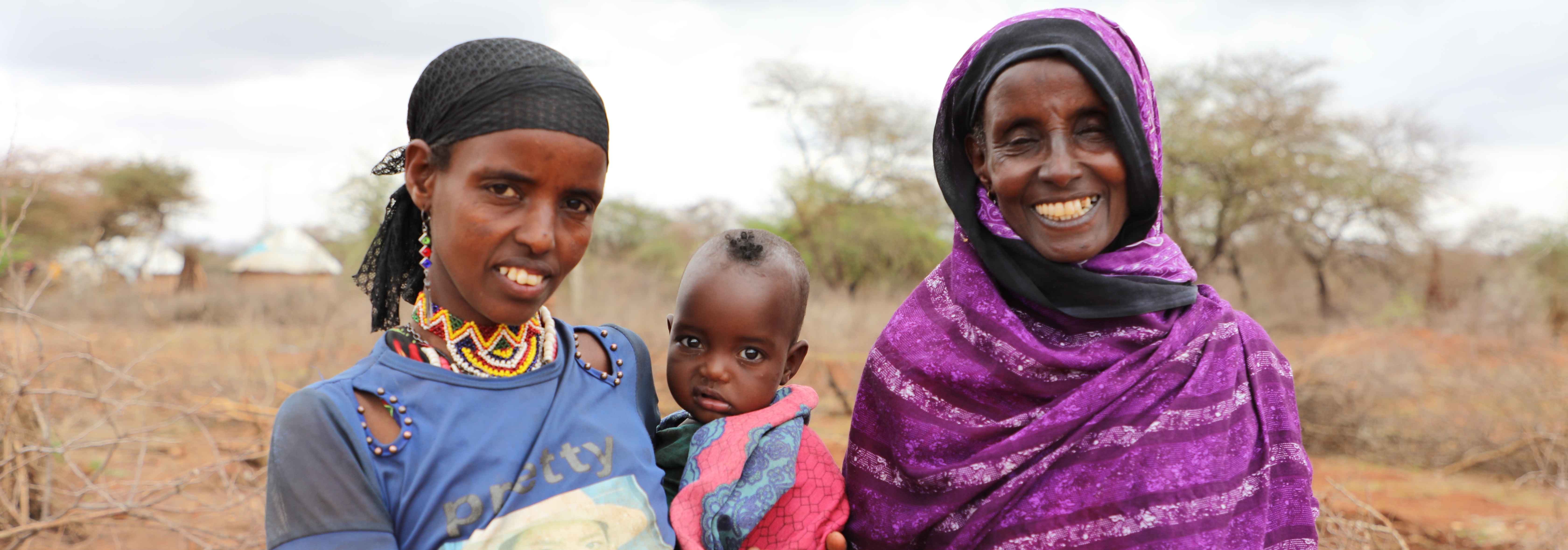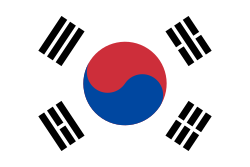IOM Vision
In close collaboration with partners and Member States in the region, IOM will continue to play an important role of protecting, assisting and supporting migrants, internally displaced populations and others affected by the drought in East and the Horn of Africa through the provision of essential and life-saving multi-sectoral assistance and working towards durable solutions for those displaced by the drought. IOM also integrates the delivery of early recovery approaches and peacebuilding programming, strengthening the resilience of drought-affected communities based on IOM’s Humanitarian Development Peace Nexus (HDPN) approach.
Objective
Saving lives and protecting people on the move
IOM aims to reach individuals affected by the drought in Djibouti, Ethiopia, Kenya and Somalia. Persons targeted for support will include internally displaced persons, migrants and host communities. Entities targeted will include national and international NGOs.
IOM in Ethiopia and Somalia is providing CCCM support to populations displaced by the drought, both operationally and through coordination support. Operational support in Somalia includes improving the living conditions in IDP sites through site development and maintenance activities, as well as collecting, analysing and disseminating information on services, population dynamics, movements, and eviction risks. Coordination support in both countries includes ensuring the needs of IDPs are identified and addressed through information management and coordination at the site level. In Ethiopia, IOM is also supporting CCCM fora through the provision of tools for data collection, service monitoring and referrals, while also supporting the establishment of Community Representative structures for IDPs and developing capacity-building initiatives for CCCM partners.
Part of the activities under Basic Needs, including food, will be funded through IOM’s Rapid Response Fund (RRF) in Ethiopia.
With the overall objective of providing safe, dignified and sustainable living conditions and shelter solutions in drought-affected areas, IOM continues to provide temporary shelter assistance and non-food items (NFI) support to affected populations. IOM is providing shelter and NFI assistance to drought-affected populations in Djibouti, Ethiopia, Kenya and Somalia. These interventions include in-kind emergency shelter, the provision of essential non-food household items, cash-for-rent, repair and maintenance of households and emergency communal shelters, among others.
Part of the activities under Basic Needs, including food, will be funded through IOM’s Rapid Response Fund (RRF) in Ethiopia.
More than 16.2 million people cannot access enough water for drinking, cooking and cleaning across the Horn of Africa, including 8.2 million in Ethiopia, 3.9 million in Somalia and 4.1 million in Kenya. In response to this and in order to mitigate the risks of waterborne diseases, IOM is providing WASH services to drought-affected populations in these three countries. IOM’s WASH interventions in these countries include the provision of water through emergency water trucking, the construction and rehabilitation of water supply schemes and sanitation facilities, the procuring and distribution of WASH-related NFIs and water treatment chemicals, as well as the implementation of hygiene awareness activities targeting drought-affected populations and host communities.
Part of the activities under Basic Needs, including food, will be funded through IOM’s Rapid Response Fund (RRF) in Ethiopia.
The drought is increasing the risk of disease and having devastating consequences for the health of affected communities, particularly in Ethiopia, Kenya and Somalia. In response to this, IOM is providing comprehensive lifesaving primary healthcare assistance, including mental health and psychosocial support (MHPSS) and communicable diseases and outbreak prevention and response, to drought-affected populations in the three countries. Specific interventions will be based on local contexts and needs, and could include deployment of mobile health teams and support to static health facilities, with nutrition as part of integrated programming, to support recovery of the health system and provide displaced populations, migrants and host communities with life-saving health services.
Protection risks, such as GBV, have been exacerbated due to the drought, with women and girls having to walk longer distances to access water and populations on the move traversing dangerous paths in search of food, pasture and alternative livelihoods. There is also a risk of adoption of negative coping mechanisms and increased cases of intimate partner violence (IPV) due to lack of food and resources at home. It is also anticipated that there will be an increase in cases of trafficking in persons. In response to these, IOM is undertaking key protection interventions through targeted assistance for at-risk persons and households in Ethiopia, Kenya and Somalia. Interventions include direct assistance through integrated mobile teams, case management, strengthening community-based protection mechanisms, engagement with community and authorities on reduction of protection risks, including capacity building to border officials as well as GBV response and prevention interventions.
Over 8.9 million livestock—which pastoralist families rely upon for sustenance and livelihoods—have died across the region, including 3.5 million in Ethiopia and 2.4 million in Kenya. This translates into thousands of people not being able to cover their basic needs. In response to this, IOM is providing multi-purpose cash assistance (MPCA) to the most vulnerable drought-affected populations in Ethiopia and Kenya. These interventions aim to ensure drought-affected populations meet their most urgent needs, including, but not limited to, food, health, hygiene or shelter. To ensure consistency in the provision of the MPCA, IOM ensures its assistance is in line with the Cash Working Group (CWG) recommendations in drought-affected regions.
The drought has had a particularly negative effect on the food security of rural populations in Djibouti, with more than 134,000 people considered food insecure. Drought-affected populations have poor to no access to markets, reduced means to buy food due to higher prices and limited access to income. Hence, IOM in Djibouti is providing the most vulnerable drought-affected populations in the southern regions of the country with standard food baskets. This intervention is developed in coordination with key partners to ensure complementarity and avoid duplications.
Part of the activities under Basic Needs, including food, will be funded through IOM’s Rapid Response Fund (RRF) in Ethiopia.

Objective
Driving solutions to displacement
IOM supports longer-term and durable solutions for drought-affected displaced populations in Djibouti, Ethiopia, Kenya and Somalia.
Considering the need for immediate, as well as medium- and long-term support and stabilization, IOM is supporting drought-affected communities across Djibouti, Ethiopia and Kenya through the provision of emergency livelihood assistance. These interventions aim at promoting and supporting early socio-economic recovery of drought-affected populations, while also strengthening their local integration.
In Ethiopia, IOM promotes voluntary and informed decision-making through institutional capacity building and community empowerment, including the strengthening of stakeholders’ capacity to respond to climate impacts and to improve community self-reliance.
Internally displaced populations are moving into urban centres in Somalia, with newly drought displaced households frequently settling on private land. This leaves IDPs in existing and new sites at risk of forced evictions as a result of unclear tenure arrangements. In response to these risks, IOM is providing displaced communities with timely and effective access to information on House, Land and Property (HLP) rights, while ensuring that HLP is taken into account during S-NFI and WASH interventions.
Objective
Contribute to an evidence-based and efficient crisis response system
Primary target entities include governmental organizations, humanitarian partners and other relevant stakeholders.
From the start of the crisis, IOM has consistently released reports based on flow monitoring of drought-affected populations across the Horn of Africa, providing a comprehensive understanding of the needs and vulnerabilities of IDPs and affected host communities.
In 2023, through the implementation of these regular and systematic assessments using the Displacement Tracking Matrix (DTM), IOM will continue to collect and analyse critical information on the geographical location, demographic breakdowns, as well as priority needs and intentions of drought-affected populations across Djibouti, Ethiopia, Kenya and Somalia.
These assessments will allow for the dissemination of up-to-date information and data that inform the evidence-based response of IOM and other relevant stakeholders, including humanitarian partners and governmental organizations, enabling them to better target their responses and improve planning.
Somalia, Ethiopia, Djibouti, Kenya
The map used here is for illustration purposes only. Names and boundaries do not imply official endorsement or acceptance by IOM.
Figures are as of 31 December 2023. For more details of IOM's operational capacity in country, please see the IOM Capacity section.















